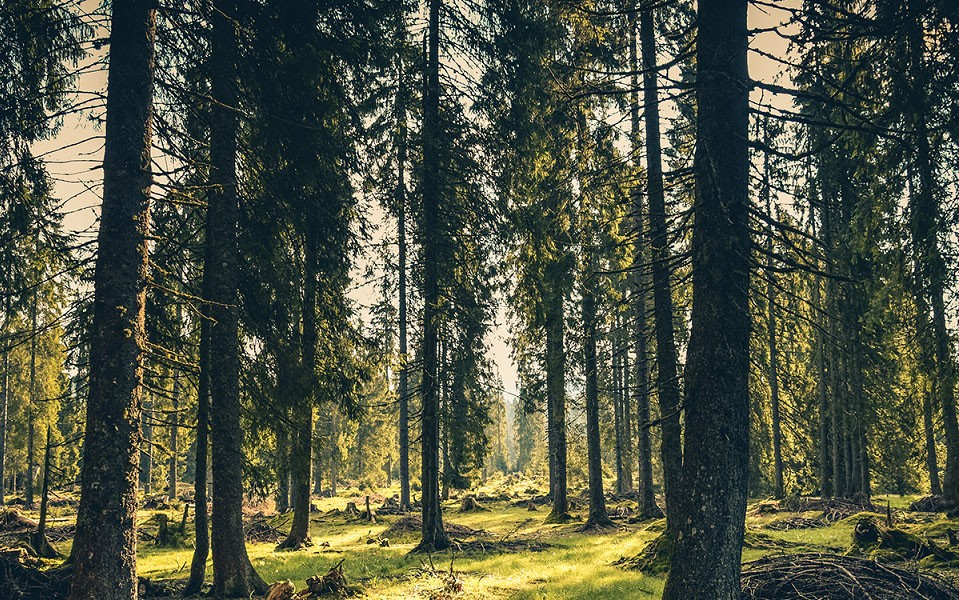
Is the Billion Tree Tsunami Project saving forests or selling them?

Launched in 2014, the Billion Tree Tsunami Project (BTTAP) seeks to improve deteriorating forest condition in Khyber Pakhtunkhwa (KPK), as well as the rest of Pakistan. The BTTAP is part of bigger project called ‘Green Growth Initiative’ aimed at greening the economy of KPK.
The PTI government pledged afforestation of one billion trees in the province. BTTAP is the fourth biggest afforestation project globally. This afforestation drive has increased the area under forest in KPK from 20 to 22 per cent. In total, 350,000 hectares of forest and land have been restored. Once matured, these forests will help Pakistan fight against effects of climate change and environmental degradation.
BTTAP has received much praise from both national and international media, civil society, environmental groups, and NGOs. The project has also been mentioned in COP 21 and COP 23, the UN climate change conferences. These conferences are undoubtedly the world’s biggest conferences on subject of climate change. Other non-profit organisations like World Economic Forum also endorsed the project by publishing its videos and images on their social media pages. With completion of the BTTAP, KPK has become the first entity in the world to fulfil its pledge for BONN challenge -- a global commitment by different state and non-state parties to 350 million hectare of forest by 2030.
At face value, this project appears to be the best thing that happened in Pakistan’s environmental landscape in the past few years. But something is happening under the carpet which finds no mention in the whole narrative.
The move behind this juggernaut ecological project is commodification of KPK’s forests.
That is being achieved by REDD+, reduced emission from deforestation and forest degradation. First, a bit about REDD+ and its working: REDD+ is a United Nations developed climate mitigation mechanism. It is aimed at reducing carbon emissions by decreasing deforestation and forest degradation in developing countries -- currently 64 developing countries are partners in UN-REDD+ programme. The idea in its simplest form is; forests absorb carbon and the absorption capacity is calculated as carbon credits. These credits can be sold in global market from where polluters can buy these credits to have their polluting activity continued as it will offset by forest absorption, somewhere in a developing country.
From the viewpoint of selling credits, it is necessary to keep forest area as it is. Because any reduction in forest through deforestation or degradation will reduce its area thus carbon credits (read it income). Now the question is how to keep these forests safe?
Forests are not just carbon absorbing machines but they are socially embedded in societies. For example, In KPK people depend on forest for their everyday survival; collection of firewood, timber, construction wood and grazing. Both society and forest depend on each other for survival.
The KPK government is already developing a framework for REDD+ and doing carbon stock surveys to quantify absorption capacity of the KPK forests. But to sell these credits in the market, these forests need to be kept intact. How can the KPK government do that? For that somehow the KPK government has to establish its control over forest resources and stop people from using forests. What could be a better excuse than ‘saving the forest’?
The narrative is the government is trying to save forest for a greater public good so the locals have to stop using (better call it degrading). It serves two purposes for the government: One, stopping people from forest use; two, establishing government’s control over forests. Once control is established, carbon credits can be sold in market. In other words, a polluter, who is harming the planet, can buy these credits while the locals lose their access and survival. It is not a hypothetical case, rather such marginalisation have happened in many countries that implemented REDD+.
A counter argument of this issue is that money is given to society/locals of the area. That is undoubtedly true. The PC 1 report of BTTAP says "the earnings from REDD+ and CDM will generate stream of benefits, part of which will be shared with owners". Did you notice the word owner? The policy maker assumes that everyone in KPK is a land holder, who will get fair share from REDD+.
However, land distribution in KPK is highly skewed -- majority of land owning groups are Pashtun tribes. Some ethnic groups like Gujjars hardly own any land. So the Gujjars who don’t own land will not get ‘fair share’ from REDD+ income. On the other hand, the government has already stopped them from grazing to ‘save forest’, and as a result many of them have already sold their herds.
The actions to conserve environment are not simple ecological issues. Rather they are deeply political actions with social implications. BTTAP is a case in point. I don’t deny its ecological aspects and importance. But what I have tried to outline above is the story of the poor of KPK who do not find space in IUCN, WWF or world Economic forum’s social media pages. This is also a reflection to the question that a herder asked me in Siran Valley "Who do you want to save…….trees or people?"